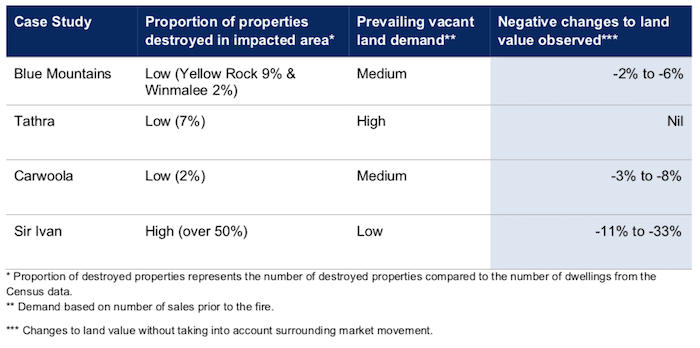NSW land values dropped by up to 33 per cent after bushfires
Record low rainfall (2019 was the driest year since records began in 1900) and record high temperatures lead to dry vegetation and an increased frequency of fire weather days.
During the 2019/2020 bushfire season to date, NSW Justice has issued a natural disaster declaration for 51 LGAs across NSW.
The Rural Fire Service (RFS) recorded the most fire incidents in NSW in the 2019/2020 fire season over the last 20 years.

The number of bushfire incidents recorded in each fire season Source: NSW Review of the impact of bushfires on land values, 9 April 2020.

Areas of NSW that were subject to bushfires in the 2019/2020 bushfires. Source: NSW Review of the impact of bushfires on land values, 9 April 2020.
By March 3, 2020 the RFS recorded that the majority of destruction from the bushfires had occurred to residential properties with some commercial, industrial and public areas also being impacted. The total number of properties destroyed and damaged are as follows:
| Degree of damage | Residential | Out Building | Commercial | Industrial | Public Area |
| Destroyed | 2,355 | 5,207 | 172 | 25 | 49 |
| Damaged | 962 | 1,911 | 71 | 26 | 66 |
In addition to the significant level of damage caused by the bushfires to property structures it has been suggested that the extent of the fires may also cause some sterilisation of the landscape. This is due to the greater intensity of these bushfires and the dryness of the landscape which had been in drought. However, the level of regeneration achievable will not be known until after the end of the bushfire season.
In response to the bushfires, the NSW government declared that it will cover the full cost of council rates for the third and fourth quarters of the 2019-2020 financial year and in conjunction with the Commonwealth government will pay the clean up costs for properties that were destroyed (Service NSW, 2020).
In early February 2020, NSW experienced significant rainfall which helped put out most fires in the state and weakened drought conditions across most of eastern NSW.
The NSW Valuer General determines land values for approximately 2.6 million properties across the state each year. Almost half of these, 1.1 million, are in located in the 51 LGA’s where a natural disaster declaration was issued.
NSW RFS impact assessment data indicates approximately 38,000 thousand of these were in the fire impact area. This represents approximately 1.5 per cent of the total number of valuations in the state.

